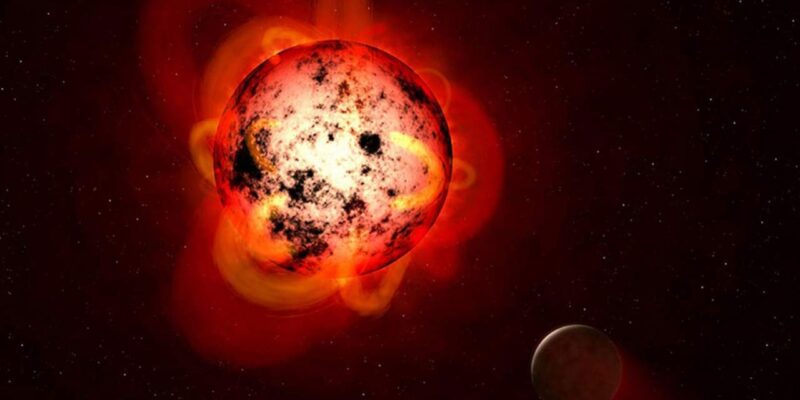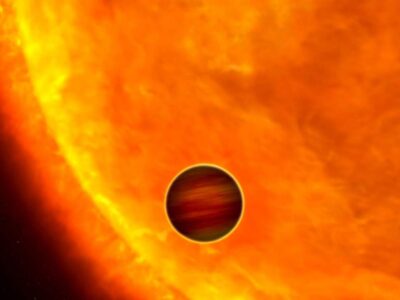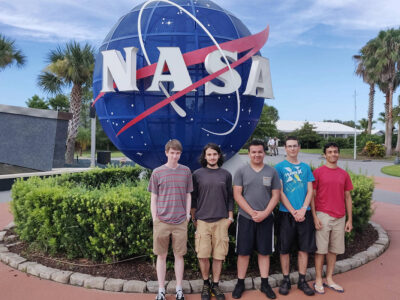NASA’s TESS (Transiting Exoplanet Survey Satellite) performs the job of discovering distant globes ringing other stars extremely well. It has discovered thousands of implicit exoplanet campaigners, and a number of those have been verified to be globes ringing distant stars. In its rearmost discovery, TESS has plant an exoplanet the size of Mars but analogous to the composition of Mercury.
The earth orbits its host star extremely nearly, and experimenters from MIT say the new earth is among the lightest exoplanets ever discovered. The earth falls into a class calledultra-short-period (USP) globes, generally veritably small worlds ringing stars at a veritably close range. USP globes generally complete an route around their star in lower than 24 hours. How these globes formed and came to be in the routeways they inhabit is a riddle experimenters are working to break The new USP TESS has discovered is called GJ 367 b, and an entire time on the earth is only eight hours. While GJ 367 b is the size of Mars, it has about half the mass of Earth, making it one of the lightest exoplanets ever discovered. The star the earth routeways is 31 light- times down from the Sun. While that’s a vast difference, it’s close enough on a cosmic scale that astronomers can godly parcels of the earth that have been insolvable with other USPs.
GJ 367 b is a rocky earth believed to contain a solid core composed of iron and nickel, analogous to Mercury’s core. Because the earth is so close to its host star, experimenters estimate the exoplanet’s face is subordinated to 500 times further radiation than the Earth receives from the Sun. The earth’s dayside is believed to be over to 1500 degrees Celsius. With such a scorching face temperature, if the earth ever had an atmosphere, it would have been wracked long agone.
While the earth is uninhabitable for life as we know it, experimenters believe the star system could have fresh globes with the eventuality for habitability. The star hosting GJ 367 b is a red dwarf, and stars of this type generally host multiple globes. Experimenters hope learning further about this system will help them understand further about the origins of USPs.
MIT experimenter George Ricker says the class of star GJ 367 b routeways would have a inhabitable zone nearly around a month-long route. Since the star is fairly close and bright, it gives experimenters on Earth a good chance to discover fresh exoplanets ringing the star.
Experimenters from the German Aerospace Center (DLR) say GJ 367 b is among the lightest of the nearly 5000 exoplanets known moment. The earth has a periphery of just over 9000 kilometers. Experimenters at the association believe studying globes similar as this is crucial to understanding how terrestrial globes form and evolve.
The earth was discovered using the conveyance system, which TESS was designed to use. While TESS discovered the earth ringing its star, another instrument called HARPS aboard the European Southern Observatory3.6 m telescope was used to determine the earth’s mass. Using the instrument, experimenters determined GJ 367 b has a compass that’s 72 percent of the Earth’s and a mass that’s 55 percent of the Earth’s. Those measures were made with high perfection. According to DLR experimenters, the compass was measured with a perfection of seven percent, while the mass has a perfection of 14 percent.
While the earth is lower in compass and mass than Earth, it’s thick. The high viscosity indicates the earth has an iron core, analogous to Mercury. While the earth is believed to be rocky, its extremely high face temperature means any gemstone or essence on the face would be melted.
As preliminarily mentioned, the star hosting GJ 367 b is a red dwarf. The star is called GJ 367, and it’s about half the size of the Sun. Red dwarf stars are lower and cooler than the Sun, making it easier to discover and characterize globes ringing them. Red dwarf stars are also extremely common, making them suitable for scientific exploration. Generally, stars of this type have an normal of 2 to 3 globes ringing.
While the face of GJ 367 b is extremely hot at 1500 degrees Celsius, it’s veritably far from being the hottest exoplanet discovered. We talked about an exoplanet discovered classified as an ultrahot Jupiter ringing its host star in 16 hours before this week. That exoplanet is estimated to have a face temperature of close to 6000 degrees Fahrenheit, making it as hot as a small star.
Back in July, astronomers searching for exoplanets discovered one that has what appears to be a moon- forming fragment around it. Scientists are keen to learn not only how exoplanets form but also how any satellites ringing them form. Last month, another exoplanet was discovered ringing a brace of stars. Circumbinary exoplanets had been theorized for times but had gone undiscovered until important instruments like the Kepler Space Telescope and TESS went into service. With those instruments, astronomers have detected 14 circumbinary exoplanets so far.
With thousands of implicit exoplanets discovered, the hunt for further continues. In November, experimenters from the University of Sydney, working with other institutions, proposed a charge to discover potentially inhabitable exoplanets ringing Nascence Centauri.















![How to solve [pii_email_af9655d452e4f8805ebf] Error?](https://themediahubs.com/wp-content/uploads/2023/02/U9rr3rhWhUvxCSyrdw3r5MZLGTsfOGbJeliDmntx-1-1-400x225.jpg)



![How to solve [pii_email_af9655d452e4f8805ebf] Error?](https://themediahubs.com/wp-content/uploads/2023/02/U9rr3rhWhUvxCSyrdw3r5MZLGTsfOGbJeliDmntx-1-1-180x180.jpg)
Comments